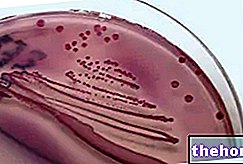they can reveal the presence of bacteria, lipids, erythrocytes or white blood cells or changes in pH. Urine may take on an unusual color after taking certain medications or supplements. For example, if you take high dosages of some B vitamins, you may notice an almost phosphorescent yellow color in the urine, while some antirheumatic drugs, such as pyramidone , give the urine a pinkish color.There are also different foods that color the urine, due to the natural pigments they contain.
red
Urine can change color, which, however, does not always have to be cause for alarm. There are several foods that color urine naturally due to the presence of specific pigments soluble in liquids. In the case of red, the unusual coloration of the urine could immediately suggest serious pathologies, due to the association with the presence of hematuria, ie blood in the urine, a frequent symptom in case of inflammation of the bladder, urinary infections, prostatic hypertrophy, kidney disease, tumors localized in the bladder or kidney and abdominal trauma However, there are also several foods that color the urine red, from pink to deep purplish red, consumed in the daily diet, especially during the autumn season.
Foods that color urine red are rich in a specific pigment: anthocyanins, naturally occurring vegetable glycosides soluble in any aqueous substance and source of antioxidants. In the food industry, anthocyanin is extracted from the skins of grape berries dark, red and black, and is therefore an important source of polyphenols. It is this pigment that gives color to the inflorescences, leaves or fruits. The intensity of the shade of red depends on both the food and the average acid-base level of each person: the more acidic the urine, the more vivid the color will be.
When urine appears orange in color it can be the alarm bell that signals the presence of a liver or bile duct disorder (especially if associated with whitish stools). The same coloration could also derive from the assumption of certain drugs such as, for example, rifampicin, sulfasalazine, and phenazopyridine. However, there are also some foods that color the urine orange due to the high amount of carotene contained: if consumed in large portions, they can also give rise to carotenosis, ie the yellow color of the skin.
Urine can take on shades of blue to green. These two colors are frequently associated with taking certain medications, such as contrast fluid, antidepressants, or anti-ulcers, but they can be released from what you eat.
Asparagus can give the urine a greenish color, as well as giving it an unpleasant smell of sulfur, due to the presence of asparagine, a sulphurous amino acid.
If the urine, on the other hand, is characterized by the presence of a sort of foam, it means that the diet is very rich in animal proteins. When it is particularly cloudy, however, it often indicates an excessive consumption of salt or tasty foods in the daily diet.
Among the foods that color the urine there can also be functional foods that improve skin aging.









.jpg)


















